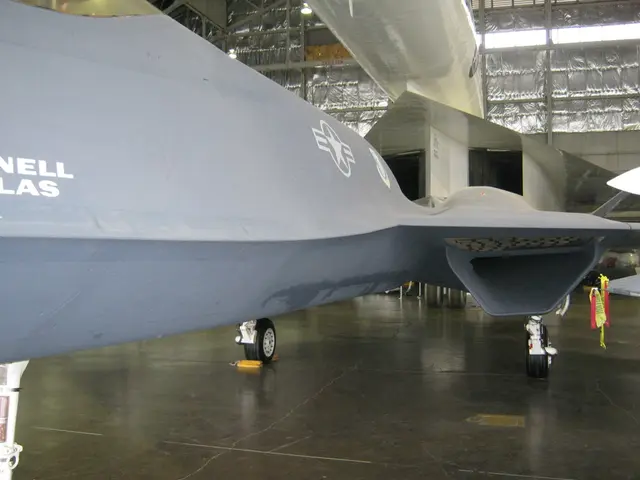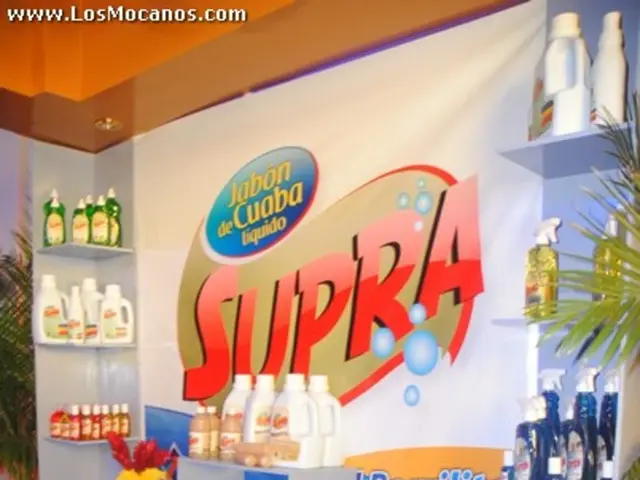Advanced Mirror Finishes Bolstering Efficiency in Aviation and Military Technology
Shining a Light on Optical Coatings
Optical coatings, thin layers applied to optical components, are a game-changer for devices like lenses, mirrors, and filters. They boost performance by tweaking how light behaves, providing image clarity, minimizing glare, and maximizing light flow. But their benefits stretch beyond aesthetics—they also boost a component's durability and modify its physical and electrical properties.
Intricate deposition techniques like physical vapor deposition (PVD) or chemical vapor deposition (CVD) create these delicate films. These methods require specialized equipment and processes to maintain consistency and meet specifications.
Bending Light to Your Will: The Nitty-Gritty of Optical Coatings
Common coatings include anti-reflective, reflective, protective, and filter coatings.
- Anti-reflective coatings, crafted to minimize reflection, enhance light transmission, and improve image quality—especially beneficial in imaging and sensing applications.
- Reflective coatings are a staple in telescopes and missile guidance systems. Aluminum, silver, and gold coatings are selected based on their spectral range and resistance to wear.
- Aluminum, offering broad spectral reflectivity, is used in general-purpose mirrors.
- Silver, boasting high reflectivity, requires protective measures against tarnishing and is suitable for imaging applications.
- Gold, ideal for infrared applications due to its thermal and chemical stability, is common in thermal imaging and defense optics.
- Filter coatings control specific wavelengths, critical in scientific instruments and laser systems.
- Chalcogenide coatings—lightweight alternatives to germanium—are essential in aerospace and defense systems where weight reduction is crucial.
Optical Coatings in Action: Aerospace and Defense Applications
Optical coatings play a pivotal role in the performance and reliability of mission-critical equipment. They improve sunlight readability in high ambient light environments and offer visual clarity in imaging, sensor, and night vision systems in low light conditions.
In addition, near-infrared band pass coatings optimize laser targeting systems and thermal sensor equipment. Conductive coatings, such as Indium Tin Oxide (ITO) and metallic alloys, offer EMI/RFI shielding for electronics like LCD displays in cold environments and electromagnetic interference.
Optical coatings in aerospace systems beef up the physical and thermal toughness and optical performance of components in satellite imaging and avionics. These coatings protect against extreme temperatures, radiation, and debris in space-based environments, ensuring reliability and precision.
Leading the Way: Cevians' Optical Coating Solutions
As a forefront player in thin-film coated optics, Cevians delivers custom solutions that cater to the needs of the aerospace and defense sectors. With deep expertise in thin films, precision deposition, and component integration, Cevians delivers tailored solutions that optimize performance for mission-critical systems. Take a peek at Cevians optical products to learn more.
References:1. "Optical Coatings in Aerospace and Defense" - Optical Coating Laboratory, University Of Rochester. Source2. "Chalcogenide Glasses: Emerging Applications" - IntechOpen. Source3. "Optical Coatings for Antireflection and Polarization" - ResearchGate. Source4. "PVD vs. CVD: Understanding the Differences" - Nanofabrication Laboratory, University of California, Berkeley. Source5. "Metal Coatings for Optics: Al, Ag, Au, and More" - ResearchGate. Source
- In the aerospace industry, technology advancements like Cevians' optical coating solutions play a crucial role in improving the performance and reliability of satellite imaging and avionics components, ensuring they can withstand extreme temperatures, radiation, and debris in space-based environments.
- Finance is needed to fund research and development efforts in the field of optical coatings, as the technology is essential for numerous applications across various industries, including science, industry, and defense.








